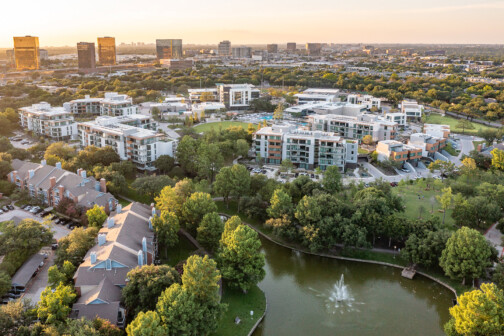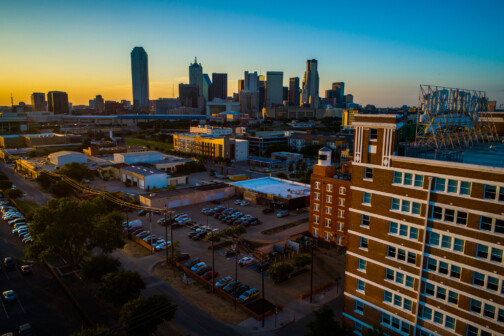The changing dynamics of the work environment and the declining need for traditional office spaces in prominent U.S. cities have resulted in the underutilization of many buildings. This shift has sparked developers’ interest in investigating unconventional and varied purposes for these structures. Simultaneously, increased urbanization has fueled the need for additional housing solutions to meet the needs of the growing population in major metropolitan areas throughout the country.

Converting office spaces into residential units has become a cost-effective solution as developers take advantage of the growing demand for housing and the decreased need for office real estate. Office-to-multifamily conversions allow builders to repurpose office properties into much-needed housing amid shifting workplace trends. This trend, accelerated by the pandemic, continues to thrive, particularly in Dallas, where a substantial population increase coincides with a high office vacancy rate.
Dallas has been in the vanguard at converting office towers and old buildings into apartments or condos. Of the 1,234 units underway through mid-2023, 90 percent are being redeveloped from existing office spaces into apartments, according to a recent report in CoStar. This trend will continue for years to come, which puts Dallas in the Top 10 U.S. cities for future apartment conversions, according to a new report by RentCafe.
Office-to-multifamily conversions yield numerous benefits in Dallas. They honor the history of existing structures, which contributes to sustainable urban development by repurposing buildings instead of demolishing and rebuilding. From an environmental standpoint, one of the most sustainable efforts architects and designers can practice is renovating an existing structure. These conversions also offer faster market delivery at prime locations and are a secure investment for developers. Additionally, they create opportunities for convenient access to amenities and public transportation, fostering walkable and sustainable communities. Converting existing structures is also more cost-efficient than new construction and is more advantageous when considering rising material and labor costs.
Converting outdated office buildings into modern residential spaces poses unique design challenges. Architects must overhaul electrical and plumbing systems meant for commercial use to meet residential needs. Outdated IT infrastructure may not support the connectivity today’s renters expect, requiring upgrades to WiFi and broadband. Retrofitting aging properties to accommodate electric vehicles and charging stations is another consideration as eco-conscious amenities grow in demand. Finally, restrictive office floor plans don’t easily adapt to the layouts renters want, making adding amenities like fitness centers difficult.
Creativity is required to work within the constraints of existing buildings, never intended for residential use. By tackling these challenges, architects can reimagine lifeless office spaces into vibrant new housing.
In summary, office-to-multifamily conversions offer a win-win scenario for cities like Dallas. They meet housing demands, revitalize neighborhoods, and promote efficient land use. By repurposing underutilized office spaces, cities can effectively use valuable real estate, accelerating the delivery of much-needed housing and enhancing local communities.
Ryan Kimura serves as Senior Vice President of Strategic Partnerships at Premier and is responsible for growing revenue and partnerships and overseeing other business development activities across the Dallas-based company’s bundle of services.
Author







